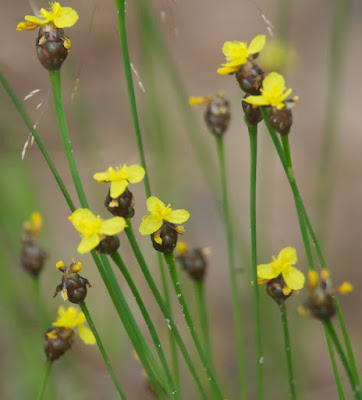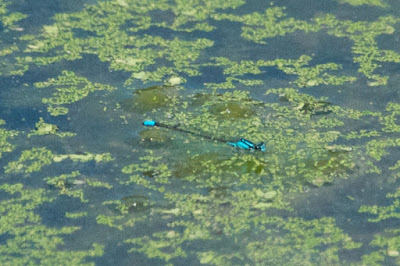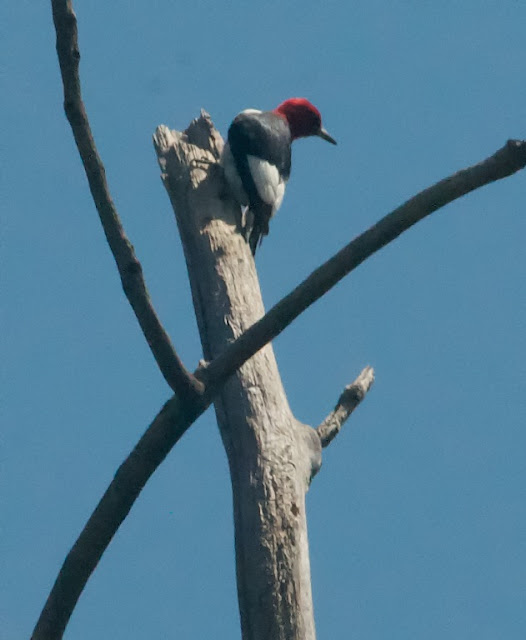Our destination was the Dune Lake Campground in Coloma, Michigan, where we set up tents for a few days of catching up accompanied by singing sessions (Tom, like me, is a fellow opera and operetta enthusiast, and back in the 1970s I frequently trod the boards with Tom and Pat’s Comic Opera Guild).
Of course we had a grand time, most of which has little to do with the subject of this blog. Nonetheless, I did take a little time to take Ryan off to check out the area.
Dune Lake, unlike many places with natural-sounding names, actually does sit on an area of sand dunes on the shore of a lake. The adjacent shore of Lake Michigan has beaches worthy of many an oceanside, a view apparently shared by the local gulls.
Michigan, rather surprisingly, has the largest dune system in the world, though it doesn’t have a square inch of desert. The dunes are most noticeable along the Lake Michigan shoreline, where sand is deposited by westerlies blowing across the lake. At the campground most of the dunes are stabilized, covered with vegetation and even supporting a large pond or two.
There were enough areas of open sand, though, to give us the feeling that we really were in a dune system. Even here, though, colonizing grasses and other successional plants were beginning to move in.
If the colonizing plants grow thickly enough, the incoming winds will no longer be able to shift the sand and these areas, too, will stabilize.
The pond edges supported wetland plants like Carolina or Bog yellow-eyed grass (Xyris difformis)....
... and Steeplebush (Spiraea tomentosa).
Sassafras (Sassafras albidum) is one of several plants from eastern North America whose nearest relatives are in Eastern Asia. There are only three living species, one in the eastern United States, one in mainland China and one on Taiwan. In this way they resemble the Tuliptrees (Liriodendron), though the two genera are unrelated. A fourth, fossil species is known from Washington Stare in the American West.
Red Oak (Quercus rubra) grows almost throughout Michigan, and can range from a straggly shrub in sandy areas to a tall forest tree if the soil is rich enough.
As usual, I kept my eyes open for any odonates that might be around the campground. I found surprisingly few, with nothing particularly unusual about. There were, for example, Eastern Forktails (Ischnura verticalis) in various stages (these are all females)....
...Violet Dancers (Argia fumipennis violacea)...
...and, among the dragonflies, the ubiquitous Blue Dasher (Pachydiplax longipennis).
After our camping trip, Tom and Pat headed home to Ann Arbor (where we would join them later on our way home). We decided instead to press on to Chicago, where we took Ryan to the Shedd Aquarium and the Field Museum if Natural History. On the way back, on August 11, we made a few stops at nature reserves in the Indiana portion of the Lake Michigan shoreline. The Carlson Oxbow Park, our first stop, is a pleasant, 89-hectare natural enclave in a residential section of Hammond.
As it’s name suggests, the park centres on an oxbow Lake - an isolated loop, once part of the Little Calumet River but now cut off. The remaining wetland is crisscrossed by a nice boardwalk, and Ryan and I had a good time exploring it.
We saw quite a bit of life it in the algae-covered water. Here is a party of male Wood Ducks (Aix sponsa), our most colourful waterfowl. By now, after the breeding season, they had already moulted into their duller ‘eclipse’ plumage.
A queue of Canada Geese swam by in stately fashion (Branta canadensis), ignoring a Painted Turtle (Chrysemys picta) basking in the background.
Here is a closer look at the turtle - apparently an old individual, one that has lost the yellow stripes decorating the head and neck of younger animals.
Here were more meadowhawks (Ruby, Cherry-faced or whatever).
Here, too, was a species I had never seen before, the Eastern Amberwing (Perithemis tenera), the northermost representative of its genus. Males of this small, rather chunky dragonfly patrol small waterside territories, where they engage passing females in elaborate courtship displays.
I at first took this for a sort of forktail because of its largely black, blue-tipped abdomen, but it is in fact a Skimming Bluet (Enallagma germinatum). This species regularly perches, as this one is doing, on floating vegetation.
On our way back to the car we came across a Red-headed Woodpecker (Melanerpes erythrocephalus), a scarce bird in Ontario and one I rarely see. It is a particularly beautiful bird, and I was very pleased indeed to see one again.
Our second stop was further east, at the Great Marsh Trail, part of the Indiana Dunes National Lakeshore.
This is quite a sizeable area, a mixture of water and woodland, and Ryan and I only had time to explore a bit of it.
The trail is reportedly a good spot for water birds. Though we were too early for the autumn migration, we did find a patrolling Great Egret (Ardea alba), here near the northern limit of its North American range (though they are considerably commoner this far north, and in southern Ontario, than I remember them being when I was a boy).
Along the edge of the marsh we found this Northern Leopard Frog (Lithobates pipiens) hiding in the grasses.
This is a meadowhawk, but unlike the individuals I showed you earlier in this post it is both distinctive and identifiable. The amber markings on its wings mark it as a Band-winged Meadowhawk (Sympetrum semicinctum).
Animal life aside, the trailside vegetation was rich and colourful. Spotted Joe-Pye Weed (Eupatorium maculatum), besides being a native wild species, is a popular garden plant with a number of named varieties.
Red-Osier Dogwood (Cornus stolonifera) is also popular in gardens (including my own), both for the red bark of its younger twigs and the bright white berries it produces in late summer and autumn.
Monkeyflowers, including this Square-Stemmed Monkeyflower (Mimulus ringens), supposedly get their name from the resemblance of the bloom to the face of a monkey. I can't see the resemblance myself. Supposedly you have to pinch the flower to get the full effect.
Tall Ironweed (Vernonia gigantea) is a widespread native member of the composite family (Asteraceae). It can grow up to ten feet in a single season.
Finally, here is a plant that I cannot identify at all. Surely someone out there is better at this than I am?
Finally, here is one of the more attractive of our often plain-looking skippers, the Silver-spotted Skipper (Epargyreus clarus). Unfortunately, the same English name is used in Europe for a completely different skipper, Hesperia comma. Well, I think ours is prettier.

















































No comments:
Post a Comment